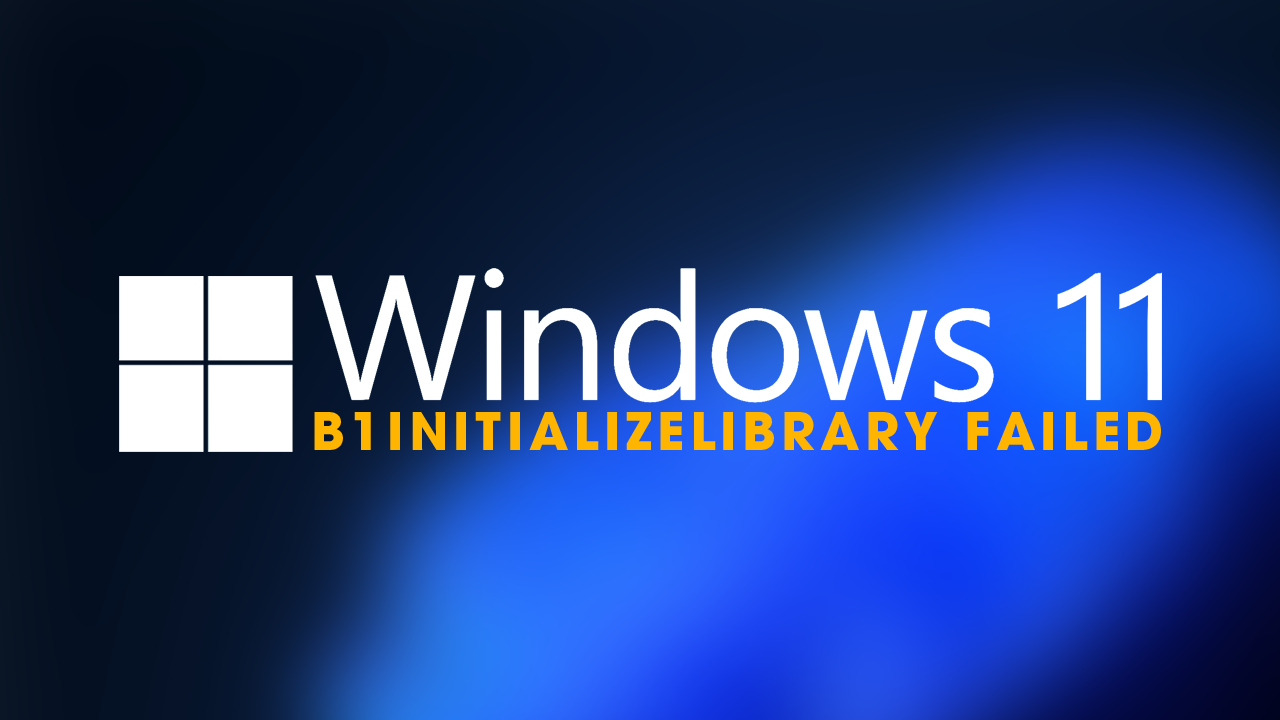Windows error 0xc0000229, often displayed as “B1InitializeLibrary failed 0xc0000229”, is a major boot failure that prevents Windows 10 or 11 from loading. It's usually connected to hardware problems and happens during hardware initialisation during system boot. That said, it could also be connected to your system BIOS, so there are a few things you need to check to fix the problems.

Takeaways:
- Learn how to fix Windows Boot Error Code 0xc0000229 (B1InitializeLibrary Failed)
- What is causing Windows Boot Error Code 0xc0000229 (B1InitializeLibrary Failed)
Table of Contents
Common B1InitializeLibrary Failed Error Causes
-
Misconfigured TPM or Secure Boot settings in BIOS/UEFI
-
Corrupted system files or boot configuration
-
Incompatible or outdated BIOS firmware
-
Hardware issues, basically any component.
-
Recent system changes or software installations
Check that your Hardware is Connected Properly
Since there is a good chance that this is a hardware issue, you need to make sure that everything inside your computer is connected correctly. Everything! Especially your GPU and RAM. These two are the most likely to cause this error, though you should also check all of the other connections as well. Especially if you have moved your PC recently.
How to Fix Windows Boot Error Code 0xc0000229 (B1InitializeLibrary Failed)
Once you have checked that all of your system hardware is connected properly, you should make sure that you are running the latest BIOS version on your device. This is super important and should solve the problem your having.
Caution: A failed BIOS update can severely damage your system. Proceed only if you're confident, or consult a professional.
-
Visit your motherboard or laptop manufacturer’s website.
-
Find the latest BIOS version for your model.
-
Download the update file
-
Create a bootable USB if needed
-
Use the BIOS update utility (either from BIOS or bootable media)
-
Restart and re-enable Secure Boot if needed.
Try the Windows Startup Repair Tool.
Windows Startup Repair can fix common boot problems automatically.
-
Insert a Windows installation USB/DVD and restart your PC.
-
Enter the boot menu (usually Del, Esc, F8, F10, or F12) and select the installation media.
-
Choose your language > Next > Repair your computer.
-
Navigate to:
Troubleshoot > Advanced options > Startup Repair -
Let the tool run and restart your PC when complete.
Need help creating a Windows installation USB?
Download the Media Creation Tool from Microsoft, follow the prompts to create a bootable USB, and select ISO if you want to save it first
Repair the EFI Partition and Rebuild UEFI Boot Files
This process helps reinitialise boot records and restore UEFI startup behaviour.
-
Boot from the installation media.
-
Navigate to Troubleshoot > Advanced options > Command Prompt
-
Run the following commands one at a time:
diskpart list volume select volume 2 ← (Replace 2 with the EFI System Partition - usually labelled ESP) assign letter=Z exit bcdboot C:\windows /s Z: /f UEFI
-
Restart your PC.
Rebuild Boot Configuration Data (BCD)
A corrupted BCD store can cause this error. Here's how to rebuild it:
In Command Prompt:
CHKDSK /f /r /b bootrec /scanos bootrec /rebuildbcd bootrec /fixmbr bootrec /fixboot
Restart once done.
Run SFC and DISM Scans
These tools repair corrupted system files that may be blocking boot initialisation.
Steps:
-
Boot from the installation USB > Troubleshoot > Command Prompt
-
Run: sfc /scannow
Wait for completion, then run:
Dism /Online /Cleanup-Image /RestoreHealth
- Restart your PC.
Use System Restore
If the issue started recently, restoring your system to a previous state may resolve it.
-
Boot into the recovery environment.
-
Go to Troubleshoot > Advanced options > System Restore
-
Choose a restore point before the issue began and follow the prompts.
